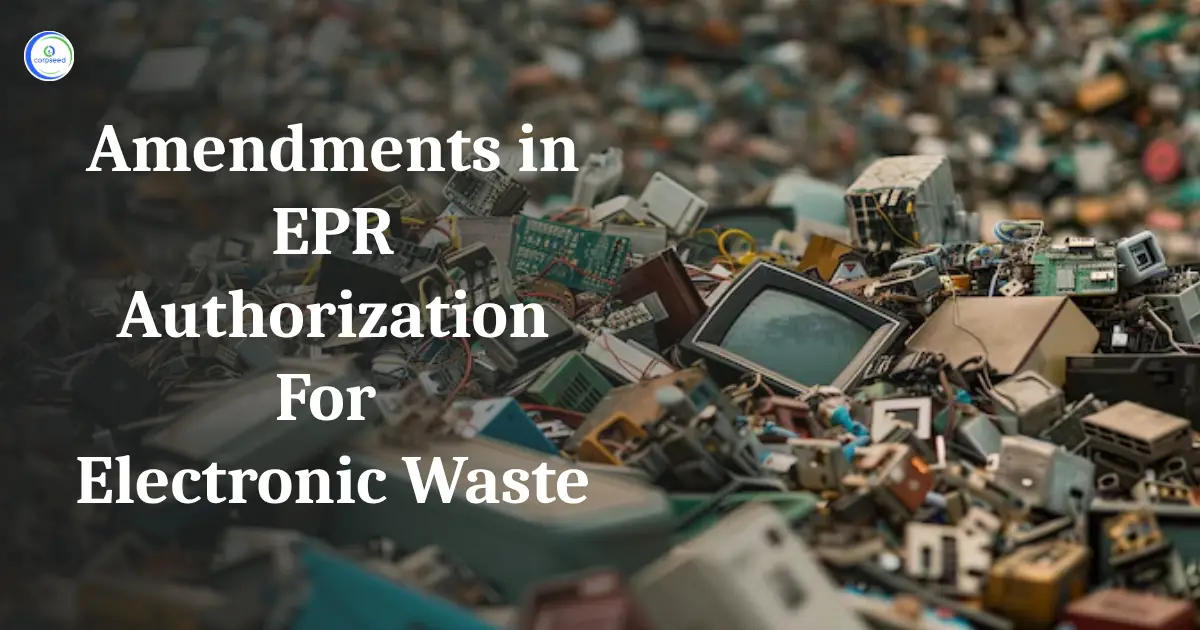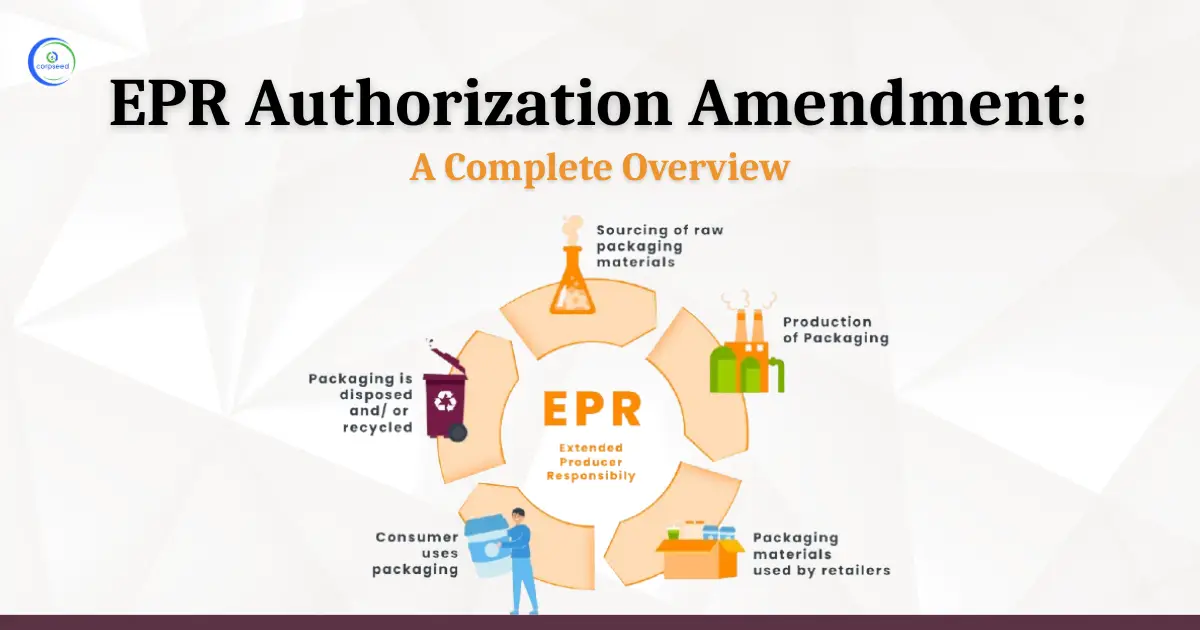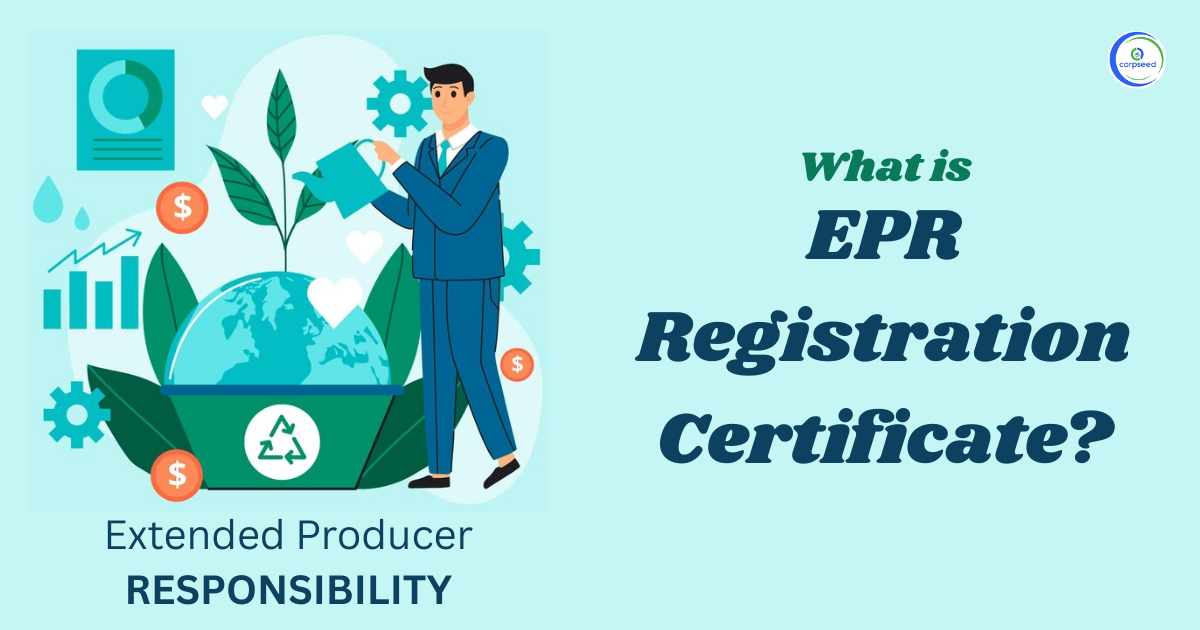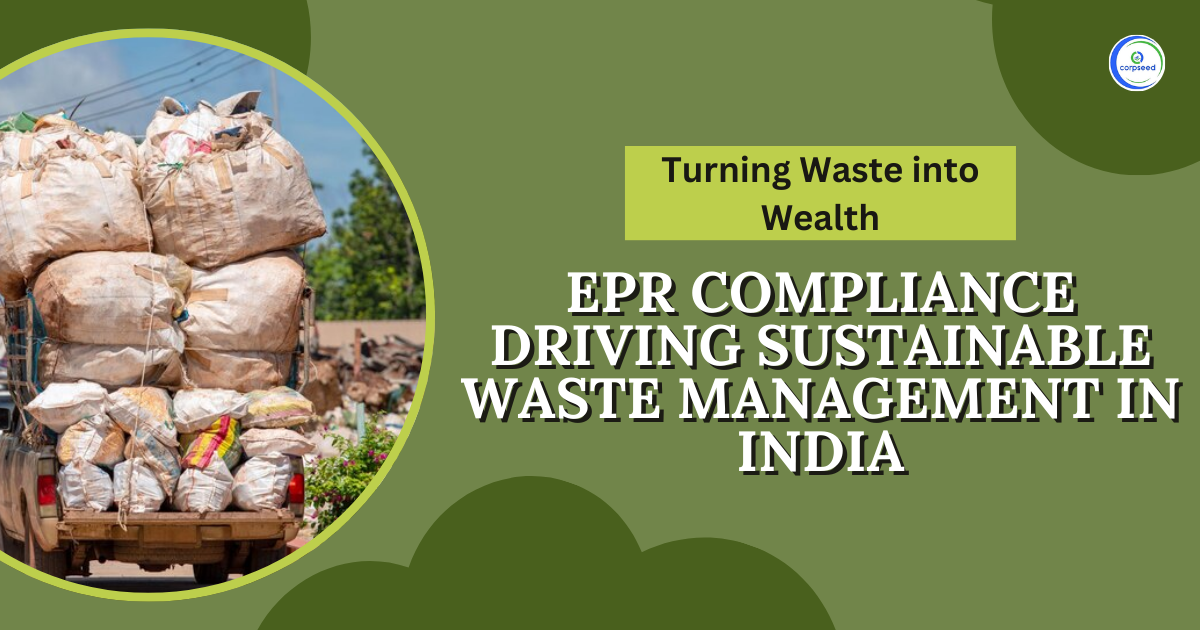Introduction: E-waste Recycler and Refurbisher Under EPR Mechanism
The E-waste (Management) Rules, 2016, drafted by the Ministry of Environment, Forests, and Climate Change of the Government of India, were adopted and implemented in 2016. Through a recent amendment, the collection and processing of e-waste would be carried out through authorized dismantlers, recyclers, and refurbishes and through the Extended Producer’s Responsibility (EPR) from April 2023.
Table of Contents
- Introduction: E-waste Recycler and Refurbisher Under EPR Mechanism
- Meaning of "E-waste"
- Types of E-waste
- Challenges Induced from E-Waste
- E-waste Management Frameworks And Regulations
- Extended Producers Responsibility (EPR) Registration Process
- Term of Storage of E-waste
- What Obstacles Must Be Overcome In Order To Implement The System For Managing E-Waste?
- Conclusion
--------------Blog Contact Form-------------
According to the ASSOCHAM-EY report on e-waste management, there is five million metric tons of e-waste in 2021, placing the United States third in the world, just behind China and the United States. E-waste is the fastest-growing waste in the world, and be it in a developed, developing, or an underdeveloped country, the amount of e-waste is increasing vastly. As per the CPCB report, there has been an increase of more than 15 lakh metric tons of e-waste in the last year, and as per the data, most of the e-waste is recycled or disposed of in an unscientific manner, through burning or dissolving it in acids.
As per the 2016 amendment, only the authorized dismantlers, recyclers, and refurbishes are responsible, under the Extended Producer's Responsibility, for the collection and processing of e-waste. For the implementation, Local bodies and municipal bodies are responsible for collecting and channeling the process of dismantling and recycling, processing, and burning of e-waste, which must be reported as a public grievance. Even the burning and illegal trading of the e-waste is considered, to a certain extent, a violation of the rules under Rule 21 of the State Pollution Control Board. Under this rule, the manufacturer, transporter, importer, producer, refurbished, and even refurbished and recycler is held liable under the Environment (Protection) Act, 1986.
According to Section 15 of the Environment Protection Act, 1986, the penalty includes monetary compensation for environmental losses or the disconnection of power and water supplies, as well as imprisonment for a term of up to five years.
Meaning of "E-waste"
E-waste is defined as a waste of electrical and electronic equipment (WEEE) discarded from their use, as well as solar photovoltaic modules or panels, which are wholly or partially discarded as waste and rejected from the manufacturing and repair processes. As per the government's data, there are 21 categories of e-waste.
Types of E-waste
As per the E-waste Management Act, Schedule 1 defines the following categories of electrical and electronic equipment, and Schedule 2 defines the exemptions to them. such as
- Information technology and telecommunication equipment (such as Minicomputers, mainframes, personal computers, laptop computers, notebook computers, notepad computers, printers including cartridges, copying machines, e-typewriters, user terminals, facsimile machines, telex, telephones, paying telephones, cord, and cordless telephones, Cellular, tablets, Phablets, I-pad, BTS(excluding the structure of tower) UPS, GPS, Inverter, Modems, Electronic data storages device, routers,
- Electrical and electronic and photovoltaic panels(such as Television sets, refrigerators, washing machines, AC, Fluorescent and mercury-containing lamps, electronic photo frames, monitors, display panels, radio sets, video cameras, recorders, amplifiers, solar panels, photovoltaic panels, cells, lamps (pressure sodium lamps, metal halide lamps), low-pressure lamps, light controller excluding filament bulbs, Digital cameras.
- Large and small Electrical and electronic equipment (such as Cooling appliances, Freezers, refrigerators, Conservation and storage of food, clothes dryers, dishwasher, E-cookers, e-stoves, e-hot plates, microwave ovens, other cooking appliances, heating appliances, radiators, heating rooms, beds, seating furniture, e-fans, exhaust & ventilation conditioning equipment’s, vacuum cleaners, carpet sweepers, sewing, knitting, weaving machines, ironing appliances, coffee machines, grinders, Smoke detectors, Heating regulators, thermostats, automatic dispensers, hot & cold drinks dispensers, money dispensers and other product dispensers, indoor air purifier, dryer, smoke detector, e-shaver, e-kettle,
- E-tools with large-scale stationary industrial tools(drills, saws, sewing machines, turning equipment, milling, sanding, grinding, cutting, shearing, drilling, hole making, punching, folding, bending of wood, metals and other materials, tools for riveting, nailing, folding, etc., welding, soldering or similar tools, spraying tools, dispersing tools, mowing or gardening tools,
- Toys, Leisure, sports equipment (e-trains, racing cars, video games, computers for running, diving, biking, running, rowing, Coin slot machines.
- Medical Devices (implanted and infected products such as radiotherapy accessories, cardiology equipment, dialysis equipment, pulmonary ventilation devices, nuclear devices and equipment, laboratory equipment, analyzers and accessories, magnetic resonance imaging (MRI), positron emission tomography (PET), scanners, computed tomography (CT) scanners and ultrasound equipment, fertilization equipment, and other electric equipment used to treat illness).
- Lab instruments, The products that are excluded are listed in Schedule 2 of the e-waste management rules for 2022.
Challenges Induced from E-Waste
- As per recent data, E-waste gets buried through landfills throughout the centuries as non-biodegradable and it emanates lots of difficulty in the upbringing of flora and fauna as well,
- E-waste contains materials such as lead, mercury, cadmium, etc., which have huge negative impacts on the environment and human health. The extraction of the metals has gone through several laboratory procedures including biotechnology and physicochemical processes to bring the metals back to their original form.
- Still, most of us are not aware of the e-waste impacts on humans and animals and the management of the same.
- As per the regulations made from the E-waste management rules, 2016 making the Extended Producers' responsibility (EPR) mandatory, the implementation has remained poor throughout the process.
E-waste Management Frameworks And Regulations
The Extended Producer Responsibility (EPR), which made the producer and manufacturer of electronic products accountable for managing e-waste, was the main component of the rules for the first time passed into law in 2011.
Second, in order to strengthen the EPR liabilities, the 2016 e-waste management rules were passed with the strengthening of the 2011 rules, and the new term "Producer Responsibility Organization (PRO)" went into effect. The Extended Producer's Responsibility (EPR) for receiving waste electronic products at the end of their useful lives has become stricter as a result.
E-Waste Management Amendment 2022
The government regulation states that it applies to every producer, manufacturer, refurbished, dismantler, and recycler engaged in the production, sale, purchase, refurbishment, transfer, dismantling, processing, and recycling of electrical and electronic waste and its components and spare parts, with the exception of battery waste, plastic packaging, micro-enterprises, and radioactive active waste. On April 1, 2023, these regulations will come into force.
With the introduction of the EPR certificate, the focus was on registered e-waste recyclers. Additionally, the CPCB's online portal allows for the verification of the amount of e-waste to ensure that it is collected and recycled in a given year. To reach its yearly goal, it can sell the quantity to another recycler.
To facilitate the collection and recycling of electronic products with specific responsibilities, an e-waste exchange facility is also accessible.
The development of e-waste dismantling and recycling facilities, as well as the skill development and health protection of the workers engaged in e-waste dismantling and recycling facilities, are all under the purview of the state government of the relevant SPCB.
The Solar Photovoltaic Panels Management
The manufacturer of the solar photovoltaic modules must register on the portal, as well as the storage of the solar photovoltaic panels in accordance with CPCB regulations, the submission of annual returns, the listing of the inventories of solar photovoltaic panels on the portal, and the recycling and recovery of solar photovoltaic panels in accordance with CPCB regulations.
Producers must follow the EPR requirements set forth in Schedules 2 and 4, which call for the assistance of third-party organizations like the producer responsibility organization, dealers, collection agencies, etc. For the EPR, only the producer is accountable.
Extended Producers Responsibility (EPR) Registration Process
The Central Pollution Control Board's creation of the EPR certificate via the online portal as a
- Registration of Recycler
Through the recent amendment made in 2022, the operation of the e-waste recycler has to register themselves to the CPCB along with the quantity of waste to be recycled. At the time of Certification, the CPCB shall decide the registered recycler’s quantity decided while providing the certificate based on the Q(EPR) = Qp X CF
That is Q EPR is the Eligible quantity for the Recycler during certification, QP is the end product quantity and the CF is the conversion factor (input required for the production of the output unit)
Validity
Beginning on the date of registration at the end of the fiscal year, the certification shall be valid for a period of two years. The certification number must include the CPCB's permissible limit of denomination, which may be 100, 200, 500, or 1000 kg; this decision rests with the CPCC.
- Registration of Refurbished
The e-waste must be refurbished through the registration of the refurbished on the CPCB portal; the refurbished must first register at the portal for certification; the EPR of the producers must be postponed for the period of time determined by the CPCB for the corresponding period of the quantity of the e-waste; and the EPR must be added to the extended producer responsibility at the end of the extended life of the refurbished products. It is the registered recycler and the production of extended responsibility certificates, not the refurbishing certificate that will fulfill the EPR obligation after the product has reached the end of its useful life.
Term of Storage of E-waste
The maximum amount of time that producers, manufacturers, refurbishes, and recyclers may store e-waste is 180 days, and this information must be included in full in the record book of each storage and transaction. The CPCB can, however, extend the storage time limit to 365 days for particular uses like recycling or reuse.
What Obstacles Must Be Overcome In Order To Implement The System For Managing E-Waste?
- The recycling and disposal of most of the quantity of e-waste are processed through the informal sector in India. The dismantling units of the goods and the other working and refurbished parts through Chemical dismantling units, and there are a large number of unregulated Employed child labor that is processed through the hazardous extraction process.
- Environmental pollution, groundwater pollution, soil acidification, groundwater contamination, the use of plastic, and even during the disposal processes are the main types of pollution brought on by e-waste.
- Lung cancer, brain damage, bronchitis, respiratory problems brought on by breathing in toxic fumes, and the use of heavy metals during the process are just a few of the health problems that affect people.
- Even though the development of recycling units is absolutely necessary, the volume cannot be handled by the recycling units that are currently in use. Since people use risky and unscientific methods to extract resources from e-waste, endangering human life as well, more than 90% of e-waste is processed in the informal sector.
- E-waste is a term used to describe products that are replaced with new models after only a short period of time when they become damaged. Additionally, there are very few products that are recycled using eco-friendly methods.
- Because the producers are unaware of the procedures involved in the disposal mechanism, the informal sector completes the disposal procedures.
Conclusion
As we saw above, the dealers and stakeholders must adopt the right steps and awareness programs and adopt an environmentally friendly recycling mechanism. There must be trained e-waste collectors and pickers, as well as strict adherence to the rules and regulations and the adoption of adequate awareness and skill sets among them. The CPCB requires the recycler and refurbished to register with them before they can operate their recycling and refurbishing business. The Norwegian model of e-waste management is widely appreciated and accepted.
EPR Authorization
EPR Registration is done by manufacturers, importers, and brand owners (PIBOs) of electrical and electronic equipments (EEE). The main objective of EPR is to encourage producers or manufacturers to design products that are easier to recycle and dispose of responsibly. EPR applies to various sectors, including electronics, packaging, batteries, and more.
E-Waste
E-waste recycling in India is important to reduce electronic waste, recover valuable resources, and promote sustainable growth. The e-waste recycling plant helps to minimise e-waste and collect valuable metals to be used later.
E-Waste Dismantling
The E-Waste rules apply to every manufacturer, producer, consumer, bulk consumer, collection centers, dealers, e-retailer, refurbisher, dismantler and recycler involved in manufacture, sale, transfer, purchase, collection, storage.
This portion of the site is for informational purposes only. The content is not legal advice. The statements and opinions are the expression of author, not corpseed, and have not been evaluated by corpseed for accuracy, completeness, or changes in the law.
BOOK A FREE CONSULTATION
Get help from an experienced legal adviser. Schedule your consultation at a time that works for you and it's absolutely FREE.





.webp)



